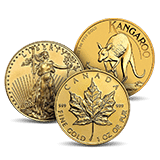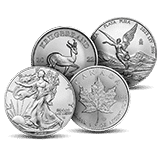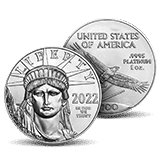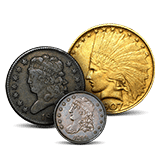
The specter of hyperinflation looms as a tangible threat, prompting investors to seek refuge in assets that can withstand the erosive effects of rapidly depreciating currencies. Amidst this uncertainty, gold emerges as a steadfast ally, offering a time-tested sanctuary against the ravages of hyperinflation.
Hyperinflation, characterized by uncontrollable price surges, erodes the purchasing power of fiat currencies at an alarming pace. History bears witness to the catastrophic consequences of hyperinflation, with nations grappling with social upheaval, economic turmoil, and the decimation of personal savings. In such turbulent times, prudent investors turn to gold as a proven hedge against the perils of hyperinflation.
Unlike fiat currencies, vulnerable to the decisions made by central banks and governmental policies, gold has intrinsic value and has served as a store of wealth for millennia. Its scarcity, durability, and universal acceptance make it impervious to the ravages of inflation, preserving wealth across generations.
What is Hyperinflation?
While economists may provide various numbers, most agree that hyperinflation occurs when prices rise by 50%+ in one month. Hyperinflation is often identified by an annualized inflation rate exceeding 14,000%.
Imagine your expenses increasing within one month while the value of the cash you hold does not. In many cases, the average citizen would quickly burn through their savings and soon be in serious trouble. Those who hold gold would be able to last longer. Gold has mostly held its value throughout history. For example, an item that cost one ounce of gold a hundred years ago may still only cost one ounce of gold today.
In severe situations of hyperinflation, fiat currency is nearly useless.
Using Gold to Protect Yourself from Hyperinflation
Hyperinflation is an economic condition characterized by extremely rapid and out-of-control price increases. This phenomenon drastically erodes the purchasing power of a currency, leading to a crisis in the affected economy. For gold investors, understanding hyperinflation is crucial, as gold is often considered a hedge against such economic turmoil. Historically, gold has held its value even in challenging economic times.
Traditional investments and savings in the local currency rapidly lose value in these scenarios. For investors, gold can be a strategic asset in safeguarding wealth against hyperinflation’s debilitating effects on a currency’s value.
Investors keen on fortifying their portfolios against hyperinflation can leverage gold through various avenues. Physical bullion offers tangible ownership and security, while gold-backed exchange-traded funds (ETFs) provide liquidity and convenience. Additionally, investing in gold mining stocks allows for exposure to the precious metal’s potential upside while diversifying risk.
Moreover, gold’s status as a finite resource underscores its value as a long-term investment. As central banks continue to engage in expansionary monetary policies and governments grapple with mounting debt burdens, the allure of gold as a hedge against inflation remains steadfast.
Amid the prevailing uncertainty in global markets, the role of gold as a hedge against hyperinflation cannot be overstated. By allocating a portion of your portfolios to gold, you can mitigate the risks associated with currency devaluation and preserve your wealth over the long term. As the economic landscape continues evolving, gold is a timeless safeguard, offering peace of mind and financial security in an uncertain world.
How Much Gold Should I Hold?
Financial advisors often disagree on what percentage of your portfolio should be in gold. However, no one can 100% predict your future. Some say 5-10%. Some also say 10-20% if you do not have real estate equity. The only danger to holding precious metals is if there are no buyers. But throughout history that situation has rarely presented itself.
Examples of Hyperinflation
These examples highlight the devastating consequences of hyperinflation, emphasizing the importance of safeguarding wealth through assets like gold.
Weimar Republic (Germany), 1920s
Perhaps the most infamous case of hyperinflation was when the German mark rapidly lost value. Prices doubled every few days, wiping out savings and causing widespread economic turmoil.
Hungary (1945-1946)
Prices doubled approximately every 15 hours during the most severe phase of hyperinflation. For example, in July 1946, the price index rose from 11,250% to 41,900,000,000,000,000% in just one month.
Zimbabwe, late 2000s
Hyperinflation reached staggering levels, with prices doubling every 24 hours at their peak. The Zimbabwean dollar became virtually worthless, leading to economic collapse and widespread poverty.
Argentina, 1980s-1990s
Argentina experienced multiple bouts of hyperinflation during this period, culminating in the “Great Depression” of 1998-2002. The Argentine peso depreciated rapidly, causing social unrest and economic instability.
Venezuela, 2010s-present
Venezuela has been grappling with hyperinflation since the mid-2010s, with prices skyrocketing and the national currency, the bolívar, losing value rapidly. This ongoing crisis has led to severe shortages of basic necessities and mass emigration.
Will the U.S. Experience Hyperinflation?
On average the U.S. experiences an inflation rate of about two percent. However, in June of 2022 the U.S. experienced 9.1 percent. While we have all experienced higher rents and increased food prices, it is still not in the range of what is considered hyperinflation. Hyperinflation would be gas prices of $3.50 per gallon surging to $35 per gallon within a year.
What Causes Hyperinflation?
Hyperinflation is typically caused by a combination of factors that result in an extreme and sustained increase in the general price level of goods and services within an economy.
Some of the primary causes of hyperinflation include:
Excessive Money Supply Growth
Hyperinflation often occurs when a government or central bank rapidly increases the money supply by printing money or engaging in expansive monetary policies such as quantitative easing. This flood of money into the economy outpaces the growth in goods and services, leading to a surplus of currency chasing a limited supply of goods, which drives up prices.
Loss of Confidence in the Currency
If investors and the public lose confidence in a country’s currency’s value, they may start to hoard goods or foreign currencies instead. This can lead to a rapid domestic currency depreciation, exacerbating inflationary pressures.
Government Deficits and Debt Monetization
When governments consistently run large budget deficits and finance them by borrowing or monetizing debt (i.e., having the central bank buy government bonds), it can increase the money supply and inflation. This can spiral out of control if investors fear that the government will resort to further money printing to finance its spending.
Supply Shocks
Events such as wars, natural disasters, or disruptions in the supply chain can cause sudden shortages of essential goods and services. When demand exceeds supply in such circumstances, prices can skyrocket, contributing to inflationary pressures.
Expectations of Future Inflation
If businesses and consumers anticipate that prices will continue to rise rapidly, they may adjust their behavior by raising prices and wages, further fueling inflation.
Currency Devaluation
A significant devaluation of the domestic currency relative to foreign currencies can increase the cost of imports, leading to higher prices for imported goods and overall inflation.
Amidst the prevailing uncertainty in global markets, the allure of gold as a hedge against hyperinflation remains unrivaled. As astute investors navigate the tumultuous waters of economic instability, the timeless appeal of gold endures as a beacon of financial security and stability. Embracing gold as a cornerstone of one’s investment strategy is not merely prudent; it is essential in safeguarding wealth and securing a prosperous future amidst the uncertainties of hyperinflation.





